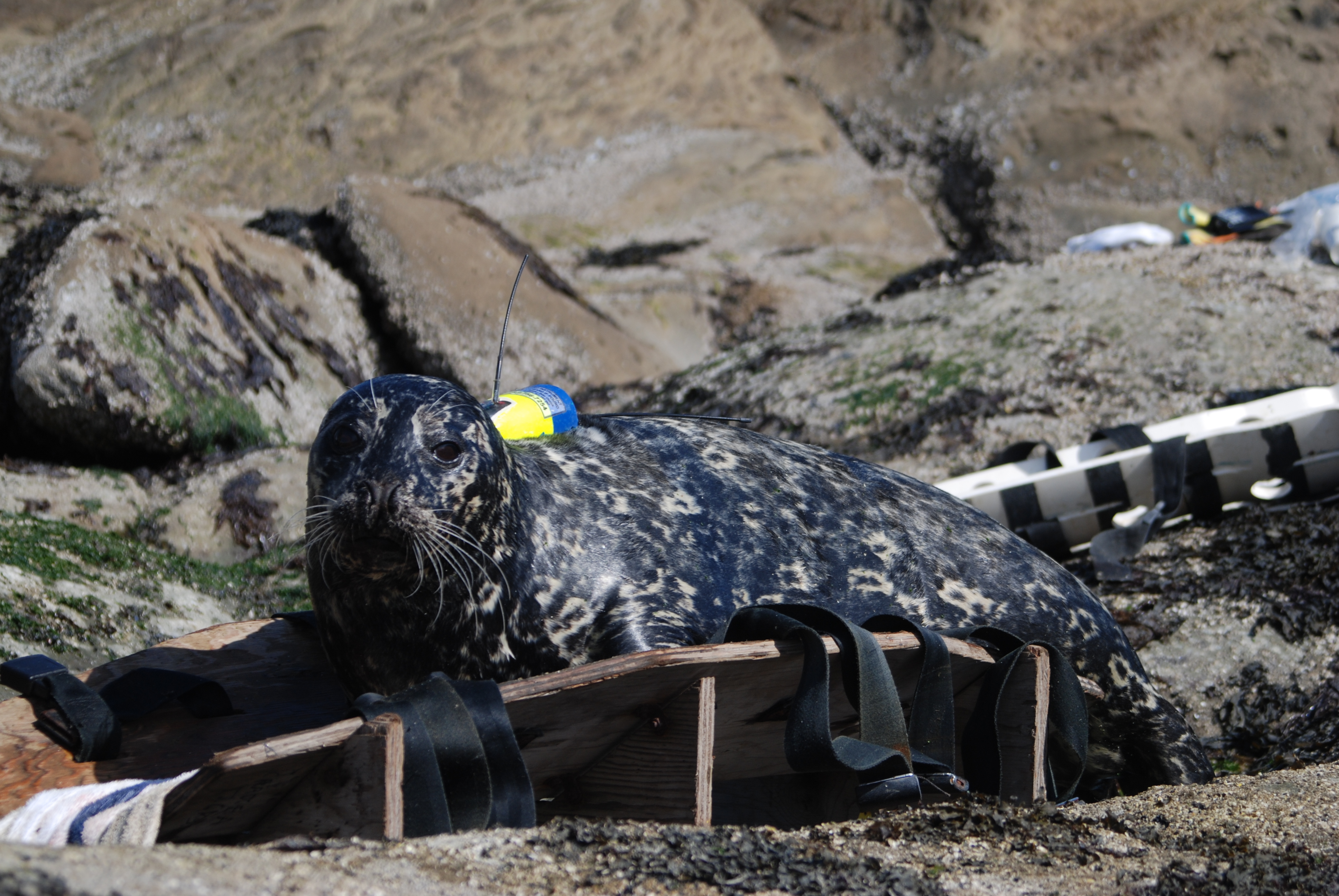The Foraging Ecology of Harbor Seals (Part 1)
One of the lab's goals is to understand the impact that harbor seals have on their environment. An approach to reach this goal is to describe the foraging ecology of harbor seals: diet, diving behavior, movements and prey consumption. We conducted such study from 2004 through 2011.

Intellectual Merit
Summary
Although harbor seals did not respond to high densities of rockfish. Rockfish in the San Juan Islands and Eastern Bays experience high predation risk from seals, whose long-distance movements may extend such predation into low density areas, such as Puget Sound.
Despite the importance of salmon and herring to seals, predation on rockfish by what appear to be individual seals may impact recovery.
We require models describing the response of rockfish to seal predation (working on it), multi-species models describing the impact of seal predation on prey assemblages, and long-term models describing the response of seals to their temporally-shifting prey field.
Novel Findings
- Seals consumed more rockfish than expected based on scat data.
- There appeared to be individual specialization among seals in diet, diving behavior, and habitat use.
- Tagged seals moved >200 km with disjunct home ranges, yet they neither foraged in candidate marine reserves nor responded to spawning prey pulses.
Broader Impacts
Training and Development
Throughout the project 6 Western graduate students were trained in data processing and analysis of tag data: geographic information systems, spatial interpolation techniques, visual basic coding for data management, as well as in communication skills, both written and oral form.
Twenty four WWU students were trained in different components of the process of science: field techniques, data processing, data analysis, research conduction, scientific writing and scientific presentations. All gained confidence in science practices and the project had a positive impact on their career goals (1-5 scale; Confidence- Before: 3.26±0.46, After: 4.01±0.58, F1,7=15.13, p=0.006; Impact- Before: 3.11±0.43, After: 4.18±0.44, F1,7= 36.92, p<0.001).
Collaborations
Collaborations were established with 18 scientists from 6 institutions: Washington Department of Fish and Wildlife, National Marine Fisheries Service, Department of Fisheries & Oceans-Canada, University of Alaska Anchorage, US Geological Survey and Washington State University.